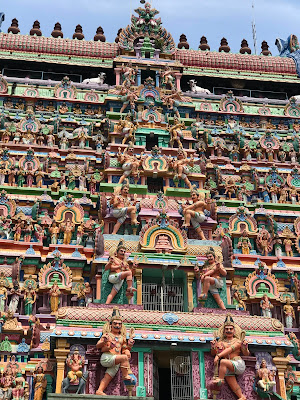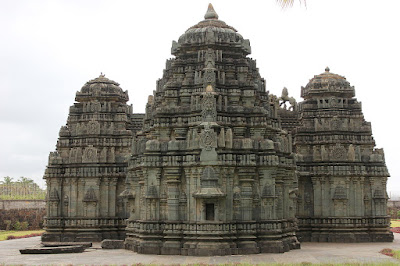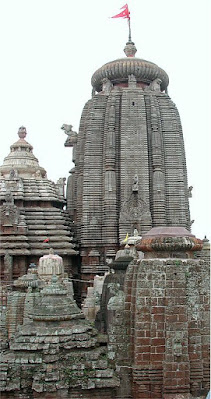India has a wonderful variety of Hindu temple architectures.
Each style evolved from previous one during a particular era and under a
particular cultural influence. But after colonial period, the style stopped
evolving further and all later modern temples we see today have borrowed
heavily from the styles that existed before. Although there are a few hipster
styles today, but still it’s little bland if you compare it with the kind of
architectures that existed before. So, how would’ve been Hindu temple
architecture of today’s India if we follow its pattern?
But first let’s check out all types of Hindu temple
architecture styles in India and abroad. You definitely must be aware of the
most common styles – the north Indian ‘Nagara’, the south Indian ‘Dravida’, and
its blend known as ‘Vessara’. But there are many regional styles which often
get unnoticed by the common folk. Let’s check them out.
Types of Hindu Temple Architecture
 |
Early Nagara Shikhara with Gavaksha
|
 |
Dravida Vimana
|
 |
Vessara style
|
 |
Kalinga style of Orissa
|
 |
Bhumija Shikhara, Nagara subtype
|
 |
Nepali style
|
 |
Kashmiri style
|
 |
| Maratha syle of Peshwa era with minarets |
 |
Goan style with blend of European and Indian elements
|
 |
Konkani style with Islamic style dome instead of Shikhara
|
 |
Kerala style
|
 |
Champa temple of Vietnam
|
 |
Indonesian style
|
 |
Khmer-Thai style
|
More Hindu temple architecture styles updated below.
 |
Bengali style Temple - Chala, Ratna, and Dalan
|
 |
Kath Kuni style of Himachal Pradesh
|
 |
Balinese style from Bali, Indonesia
|
Precursor to Hindu architecture
All of these styles have few things in common. A step-pyramid,
human-deity motifs and horse shoe arches known as gavaksh or cow’s eye. Step-pyramid
also exists in Shikhara towers of Nagara style, but its curvilinear bend makes
it look smooth and less visible. The human-deity motifs seem obvious but the gavaksh
motif usually go unnoticed in many styles as it changes forms.
This gavaksh, or chandrashala motif has its origin in the residential
structures of the ancient period. Origin of Hindu temple architecture exists in
the Buddhist architectures of ancient India. This gavaksh motif existed since
then. From ancient reliefs, caves, chaityas to monasteries we understand that
ancient Indian houses had a round roof in the shape of a horse shoe. Hence, we
see this design everywhere in these religious structures. For the sake of simplification,
let us call it ‘house motif’.
 |
Ancient architecture at Nalanda with gavaksha motif
|
This same design is then seen in the earliest Nagara and
Dravida style. Same ‘house motif’ is seen in the Southeast Asian styles where
the designers had theoretical knowledge but no physical reference.
Evolution to Modern Hindu Architecture
When Deccan came under Islamic rule, many temples took on
mosque like styles, probably to escape demolition. But later during the rule of
the Marathas something uniquely wonderful happened. It took the Indo-Islamic
and Rajput elements and fused it with the Dravida Vimana, creating the lesser
known Maratha style. In this style the house motif had taken the form of Rajput
balcony or jharokha, reflecting the style of the residential
architecture of the period.
 |
Maratha era temple at Wai
|
Similarly, the human motifs in these temples also had fashion
contemporary to its time. Notice the change in clothing fashion?
 |
Ancient style of clothing
|
 |
| Clothing prevalent during the Maratha rule |
Now, using these ideas let us construct a modern style of
Hindu temple by taking the step-pyramid, adding a modern house-window motif,
and contemporary human figures. This is what we should get.
 |
| I created this hypothetical design with modern tower style vimana |
It may seem funny, but that’s how it should be organically. We
of course do have some other experimental styles at its place, but detail work
is usually missing.
 |
Hanuman Temple at Nashik
|
 |
Siddhivinayak Temple with spires and phamsana shikhara
|
It is very interesting how our temple architecture designs evolved based on its contemporary surroundings. Afterall, temples are residence
of the gods.
























I can see that you have gathered a lot of facts for this. Good read
ReplyDelete